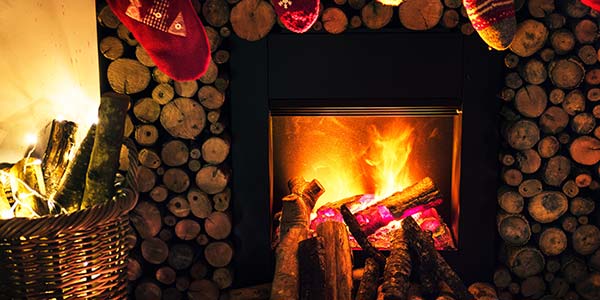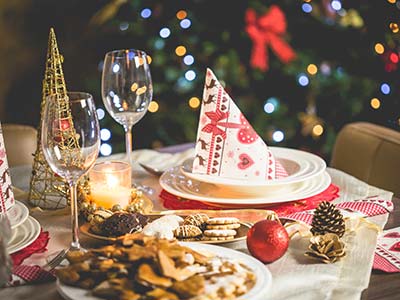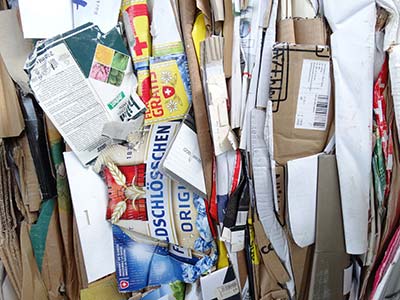As a familiar tune reliably informs us; it’s the most wonderful time of the year, but for many of us, it’s also the most wasteful.

We appreciate that the festive season is a time to kick back, relax and enjoy time with friends and family. But with that in mind, it’s likely that terms such as ‘waste prevention’ and ‘effective recycling’ aren’t likely to be high on your priority list.
However, if we all do our bit, the collective benefits could be enormous.
If each family across America re-used just 2 feet of holiday ribbon, for example, we would be able to wrap a 38,000 mile-long bow all the way around planet Earth*...and we don’t need to stop there!
Here’s a few more ideas on how to appropriately dispose of waste this holiday season:
1) Oh Christmas tree, oh Christmas tree, I have no idea what to do with thee!

Once all the presents have been opened, mince pies consumed, and decorations packed away for next year, the tree can be the last one standing, but don’t rush to throw it out with the rest of the trash.
If you’re one of the 33 million** Americans who annually purchase a Fraser Fir, Colorado Blue Spruce, Virginia Pine - or anything else in between, it may be easier than you’d think to dispose of your tree in a way which is also beneficial to the environment.
Many of us don’t see the problem with sending our trees to landfill, after all, they’re completely natural, so that means they’re biodegradable, right? Whilst this is true, the vast amounts of waste we send directly to landfill creates an anaerobic environment, which in turn, significantly limits the vital flow of oxygen which is necessary if trees are to biodegrade. Without an appropriate flow of oxygen, this entire process takes a whole lot longer.
Top Tip: Take a look at Earth911’s super handy search tool, all you have to do is enter your zip code to find your nearest Christmas tree recycling option!
2) Cut down on food waste
The amount of food we throw away in the U.S. is startling. Estimates show that across our country, an astonishing 40% of food is wasted each year, which equates to a value in excess of $165 billion.*** Figures and stats like this can be a little hard to get your head around,  so imagine taking out $2,200 from your nearest ATM, popping home, and tossing it directly into the trash. In essence, this is what the average American family is doing on an annual basis when it comes to food waste...a pretty sobering thought.
so imagine taking out $2,200 from your nearest ATM, popping home, and tossing it directly into the trash. In essence, this is what the average American family is doing on an annual basis when it comes to food waste...a pretty sobering thought.
So how can we stop our indulgent, festive food adding to the problem?
Well, a good place to start is that fine piece of Turkey, sitting proudly on your dining table. Let’s avoid any excessive waste by thinking about the number of people that could be fed from our leftovers (it’s estimated that through the accumulation of combined food-waste, 6 million Turkeys were thrown away during Thanksgiving, 2016!)****
Handing over leftovers to friends and family, or simply those who are in need, can only be a good thing. Failing that, why not check out some leftover meal ideas, get the freezer involved, and always compost your peelings/food scraps!
Top tip: If you’re lacking the infrastructure to get your composting regime up and running, take a look at our food waste recycling bin, or browse our wider range of recycling containers.
3) Break it down, and compact
Once the joys of the festive season have passed us by, and the January blues are beginning to set in, it’s worth bearing in mind that there’s still plenty you can do to help protect the environment.

According to the Department of Commerce, online purchases now account for 9.1% of all U.S. retail sales.***** As a result, and especially over the Christmas period, this means a huge amount of cardboard boxes are going to be shipped to customers’ homes.
Cardboard is an ideal material to recycle as it's clean and easy to process, plus, recycling your old cardboard requires 75% less energy than if a new material were to be manufactured from scratch.******
But before you put your cardboard out to be recycled, make sure it’s broken down as-flat-as possible, this way, it’ll take up much less room in the recycling truck, and won’t require any extra trips/energy consumption.
Once the festivities have passed us by, wrapping paper is another ubiquitous, festive favorite which can be difficult to know what to do with.
Top tip: Check out our guide to reducing, reusing and recycling wrapping paper to find out some simple solutions.
Christmas trees, excessive packaging, and food waste may be three of the most common areas where confusion can arise in terms of disposal. However, there’s a host of further actions we can take to minimize the environmental impact of our Christmas traditions.
From eco-friendly decorations, to shopping locally and supporting American industry; installing energy-efficient LED lights, to scrapping the disposables...if we all do our bit, collectively, we can make a real difference.
Happy holidays from all the Glasdon team!
Sources:
* https://lbre.stanford.edu/pssistanford-recycling/frequently-asked-questions/frequently-asked-questions-holiday-waste-prevention
** https://www.norcalcompactors.net/benefits-paper-cardboard-recycling/
***http://www.theswagusa.com/2017/04/20/10-shocking-food-waste-statistics/
**** https://www.aol.com/article/lifestyle/2016/11/29/this-is-how-much-food-americans-waste-during-the-holidays/21616627/
***** https://eu.usatoday.com/story/tech/news/2017/12/20/dont-recycle-bow-sloppy-christmas-recycling-can-send-all-your-efforts-landfill/963415001/
****** https://www.norcalcompactors.net/benefits-paper-cardboard-recycling/




